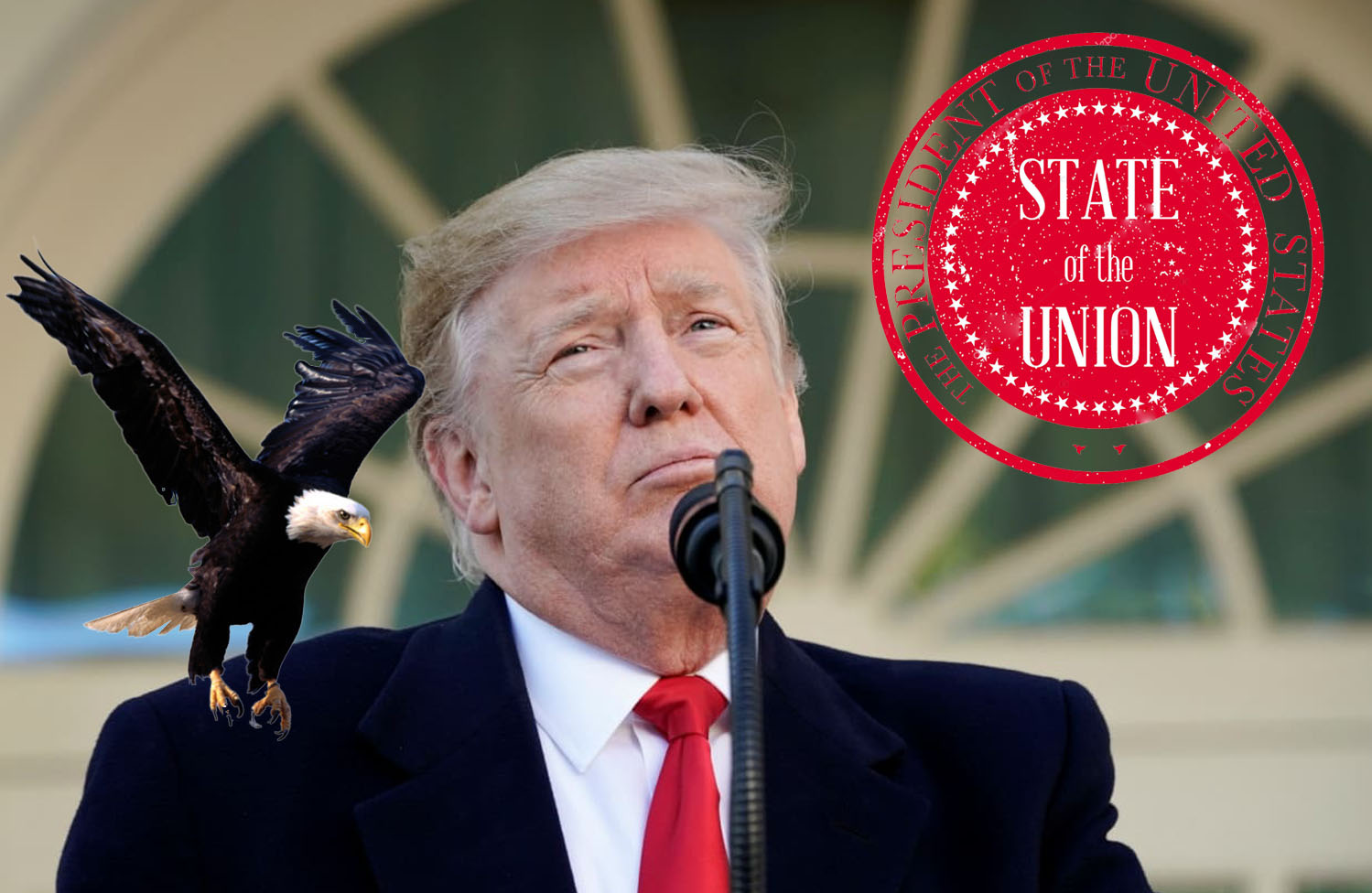The President of the United States “shall from time to time give to the Congress Information of the State of the Union, and recommend to their Consideration such Measures as he shall judge necessary and expedient; he may, on extraordinary Occasions, convene both Houses, or either of them, and in Case of Disagreement between them…he may adjourn them to such Time as he shall think proper.”
When James Madison wrote the document the document that ultimately formed the model for the Constitution, he included the parameter regarding the State of the Union to give the seated president an opportunity to address the legislative branch of government and inform them of pressing issues facing our nation. Suffice to say, President Donald Trump has no shortage of concerns to present to Congress during this year’s speech.
The upcoming State of the Union, delivered by President Trump, was originally set for Jan. 29, but there was a slight snafu related to that clumsy little partial shutdown of the federal government which delayed the speech just a bit. Though the President recently addressed the American public, nearly three weeks ago, and informed viewers of the dire need for a border wall to be built along the U.S.-Mexico border, he’ll get another crack at it on Tuesday, Feb. 5, 2019.
As journalists and media correspondents prepare for the President to deliver his speech, a question is stirring among the American people: what is the current state of our union?
If we utilize President Trump’s current relationship with Congress as a litmus test for how our nation is feeling, overall, the future doesn’t seem all that positive. After a nearly forty-day long government shutdown, the newly instated 116th Congress was made privy to the inconvenient truth that our President will go to any length necessary to get his points across.
If it wasn’t a government shutdown, it was public threats to declare an official state of emergency so that, through some bizarre loophole, the U.S. military could be deployed as the President’s personal construction team to build his wall. But President Trump trekked onward, deciding to withdraw all U.S. troops from Afghanistan and Syria without asking permission of Congress, or really any government official for that matter.
Compared to the President’s first State of the Union address back in January 2018, this year’s congressional audience will be statistically unamused. Following the momentous events of November’s midterm elections, Republicans lost forty seats to the Democrats, becoming the minority party in the chamber for the first time in nearly a decade.
It won’t help that as President Trump delivers his speech, he’ll be directly under the vicious glare of House Speaker Nancy Pelosi (D-CA), who has made it quite clear that she is less than pleased with the President.
President Trump ultimately thought it would be best to temporarily reopen the federal government while he negotiates his wall requests with the immigration-focused conference committee, but per recent reports, he is far from pleased with the compromises being presented to him.
It’s clear that the Democratic leadership has no intention of passing a measure that would deliver the some $5.7 billion Trump is requesting for his wall project, and some political analysts believe that the President will offer several hot takes during his State of the Union address regarding the lengths he will go to get this wall built.
According to Politico, Trump has been stoking speculation that he will make a major announcement in his upcoming speech, telling reporters over the weekend to “listen closely,” and “you’ll hear the State of the Union, and then you’ll see what happens right after the State of the Union.”
In an excerpt released to the public, we know that Trump will say something along the lines of “together, we can break daces of political stalemate, we can bridge old divisions, heal old wounds, build new coalitions, forge new solutions, and unlock the extraordinary promise of America’s future.”





